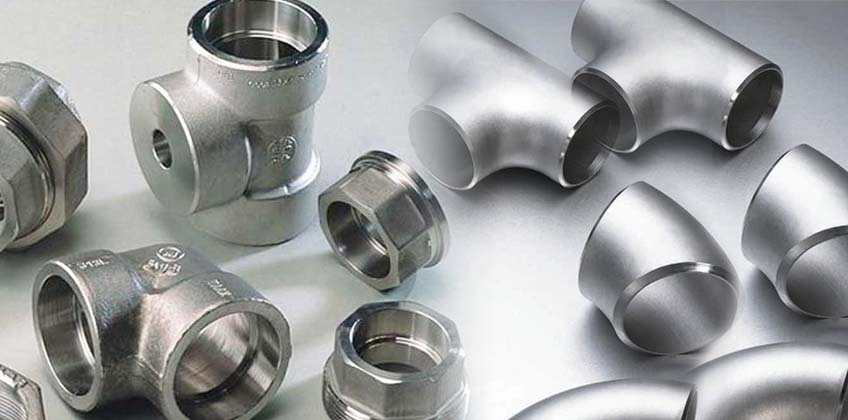When it comes to selecting the right type of fittings for your piping system, understanding the differences between stainless steel buttweld fittings and other types of fittings is crucial. Each type of fitting offers distinct advantages and is suited for specific applications. In this post, we’ll compare stainless steel buttweld fittings with socket weld and threaded fittings to help you make an informed decision.
Stainless Steel Buttweld Fittings
Overview:
Buttweld fittings are designed to be welded directly to the pipe. These fittings are commonly used in applications where a permanent, welded connection is required. They come in various shapes, such as elbows, tees, reducers, and caps, allowing for a seamless flow in the piping system.
Advantages:
- Strength and Durability: The welded connection provides a stronger joint compared to other fittings, reducing the risk of leaks.
- Smooth Flow: The absence of internal threads or socket ends ensures a smooth internal surface, minimizing turbulence and pressure drop.
- Corrosion Resistance: Stainless steel buttweld fittings are highly resistant to corrosion, making them ideal for harsh environments and corrosive media.
Applications:
- High-pressure and high-temperature systems
- Chemical processing plants
- Oil and gas pipelines
- Food and beverage processing
Socket Weld Fittings
Overview:
Socket weld fittings are designed for smaller diameter piping systems. They involve inserting the pipe into a recessed area of the fitting and then welding around the joint. These fittings are typically used for applications requiring strong, leak-proof connections.
Advantages:
- Ease of Installation: Socket weld fittings are easier to align and weld compared to buttweld fittings, especially in tight spaces.
- Leak Prevention: The welded joint provides a leak-proof connection, which is essential in high-pressure systems.
- Less Need for Precision: Less precise pipe cutting is required, as the pipe end is inserted into the fitting.
Applications:
- Small diameter piping systems
- High-pressure systems
- Steam lines and hydraulic systems
Threaded Fittings
Overview:
Threaded fittings are connected by screwing the pipe into the fitting. They are commonly used in low-pressure and non-critical applications. Threaded fittings come in various materials and sizes, providing versatility in their use.
Advantages:
- Simplicity: Threaded fittings are easy to install and do not require welding, making them suitable for quick repairs and modifications.
- Cost-Effective: They are generally less expensive than welded fittings and require less specialized labor for installation.
- Reusability: Threaded connections can be disassembled and reused, offering flexibility in certain applications.
Applications:
- Plumbing systems
- Fire protection systems
- Low-pressure air and water lines
Comparison
Strength and Durability:
- Buttweld Fittings: Provide the strongest and most durable connection due to the weld.
- Socket Weld Fittings: Also strong, but less so than buttweld due to potential crevices that can harbor corrosion.
- Threaded Fittings: Least durable, prone to leaks and not suitable for high-pressure applications.
Ease of Installation:
- Buttweld Fittings: Require skilled labor and precise alignment for welding.
- Socket Weld Fittings: Easier to install than buttweld but still require welding.
- Threaded Fittings: Easiest to install, no welding required.
Cost:
- Buttweld Fittings: Higher initial cost due to welding requirements and labor.
- Socket Weld Fittings: Moderately priced, with lower labor costs than buttweld.
- Threaded Fittings: Lowest initial cost, but may incur higher maintenance costs over time.
Applications:
- Buttweld Fittings: Best for high-pressure, high-temperature, and corrosive environments.
- Socket Weld Fittings: Suitable for smaller diameter, high-pressure systems.
- Threaded Fittings: Ideal for low-pressure, non-critical applications.

